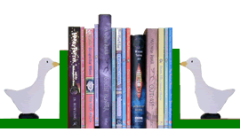The right picture can bring your cover to life, but you can’t just download a picture you like from the internet and use it without permission. That would be a breach of copyright and could result in you being sued. And It wouldn’t work anyway as most pictures online are very low resolution – much too low to use on your book cover. So how can you get the right picture?
Ask for permission to use the picture you found online
The fact that the picture you found is protected by copyright doesn’t mean you can’t use it. It just means you have to ask permission first and, as you want to use it commercially, you will probably be asked to pay a fee. Make sure you ask the right person for permission – the website owner won’t necessarily be the copyright holder for the picture – and, if you’re not sure you’ve found the right person, don’t use the picture.
Use royalty free pictures from an online agency
I usually use istockphoto.com because its search engine is very good and helps me home in on exactly the right picture for my needs. But there are plenty of others you can use including Shutterstock.
When pictures are advertised as royalty free that only means you don’t have to pay a royalty for every use. It doesn’t mean you can use them for nothing – you still have to pay a flat fee, especially for commercial use (which is what you’re doing). But these fees are relatively modest and well worth paying to get the right image for your cover. Make sure you read the license carefully to check it’s right for your needs and ask for clarification if you’re not exactly sure what the small print means.
Take your own photo
This can work if you are good at photography and have access to the subject that you need. If you live in Birmingham, you’ll find it hard to take a picture of Sydney Harbour Bridge but a close up of a cat’s tail shouldn’t be a problem. You don’t need a fancy camera – I’ve seen some brilliant covers produced using phones. As with everything you do when self-publishing, quality is key. Only use photos that are crisp and in focus with no camera wobble.
Paint or draw your own picture
This is probably the riskiest option so only do this if you are very, very good – good enough to be a pro. Nothing shouts poor quality self-publishing as loudly as an amateurish cover drawing and that’s true as much for children’s books as it is for books for adults. Of course, if you are artistic, you don’t have to limit yourself to drawing and painting, as you can see from Katherine Roberts’ blog.
Commission a professional photographer or illustrator to produce your picture.
In order to do this, you need to have a clear idea what you want so you can provide a detailed brief. Make sure you agree this in advance in writing and also have a written agreement about timescales, payment and rights. You don’t need the copyright – you just need a license to use the picture on your cover in return for an agreed fee.
Ask to see samples of other work before you commit to commissioning your picture. This is particularly important if you’re using an illustrator as you need to use someone with the right style for what you have in mind.
Diana Kimpton
